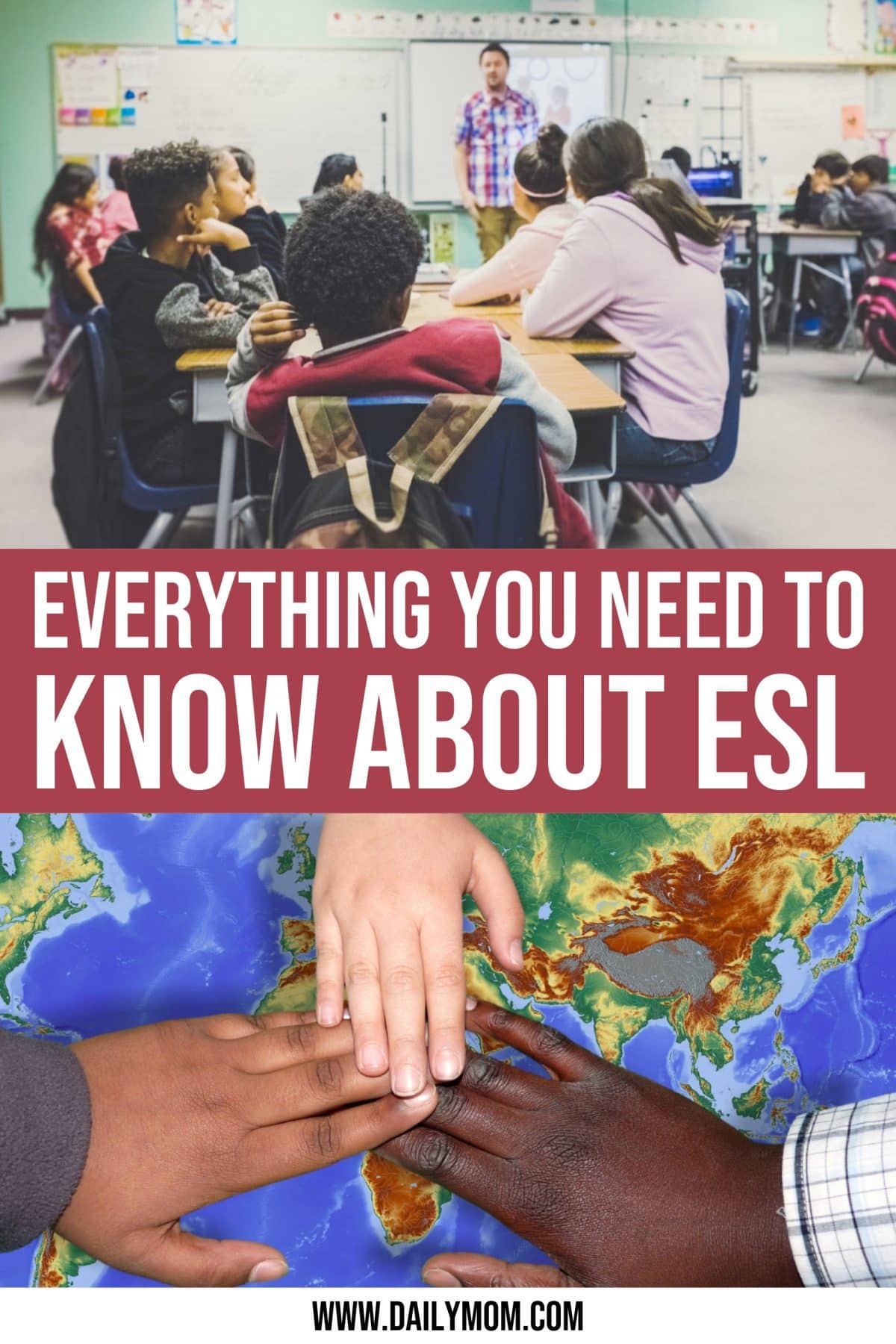ESL is a common abbreviation for English as a Second Language. There are many different ESL online programs available to learn ESL. The term is typically used in educational settings referring to programs that educate students who are not native English speakers. The term is used to reference these programs and sometimes the students themselves.
Can you imagine living in a different country? For many families, that is their reality: a new language, culture, home, and school. Scary? SURE! What happens when these little ones with little or no English language go to school? How will they integrate into a regular classroom?
ESL classes are not only for K-12 students. Adult, collegiate, private, and community classes are offered through various platforms. From free classes at your local library to ESL online classes, everyone can have access to the English language!
ESL Programs: What Are They? How Do They Work?

Once a student from a non-English speaking family is identified they will be placed into an ESL program.
These students come from various backgrounds:
- Permanent immigration to the United States
- A temporary move for a parent’s career or schooling
- Foreign exchange students
- United States-born children who speak a foreign language at home
ESL programs are designed to give these students individualized instruction while learning English. Programs focus on four domains: reading, writing, speaking and listening. The end goal is for the children to ‘exit’ out of the program and integrate into a regular English speaking classroom for all instruction.
The amount of time that a student spends in an ESL program depends on their level of English language proficiency and specific school program. A new student with little to no English may spend most of the day in an ESL classroom, slowly integrating into regular classrooms as they become more proficient. On the other hand, students who understand and can speak some English may only need an hour or two of ESL per day.
ESL Teachers, Students, and Classrooms

Contrary to popular belief, teachers of ESL classes do not have to know every language their ESL students speak. Classes are run very similar to foreign language classes for native English speakers. Imagine a Spanish or French class as a native English speaker. In the most basic form, that is how ESL classrooms function and run. The major difference is that students will typically speak different languages and dialects.
Although learning the English language is the main priority for students and teachers alike, many ESL programs go beyond the language and classroom. Most programs help children and adults adjust to American society and culture, as well.
Most ESL teachers have been trained and certified to take part in the school’s ESL program. The training and classes offer specific techniques and tools to help their students learn English. Furthermore, they emphasize the acceptance of diversity and the ability to respect the cultural differences that all students bring to the classroom.
All ESL classrooms are unique. They encompass diverse students from all over the world with various levels of academic and social English language proficiencies. The ESL teacher will use techniques and tools that allow all students to learn all aspects of the English language. While all classrooms are different, many use the same accommodations and modifications for teaching ESL students.
Pictures and visual aids are one of the most commonly used tools. Most students can identify an image in their native language and make their association with the English word using pictures. Repetition and demonstrations are other tools used frequently in the classroom. And of course, technology has grown to be a staple in all classrooms!
The end goal is for all students is to learn English in order to participate and join their peers in a regular classroom.
A New Era: ESL Online

As online schooling and teaching become more popular, the opportunities for teaching ESL online have grown rapidly. ESL online classes have grown from overseas students learning English as an addition to their native language to a virtual classroom environment offered through the online public school system. ESL online classes offer both the student and teacher more options, using technology at its core, for learning and teaching. Classes can be done via virtual classrooms, video chat, or prerecorded lessons.
Teaching ESL online gives teachers an opportunity for flexibility, creativity, and exposure to foreign cultures. Teachers can perform their job from anywhere in the world, and depending on their school or organization, at any time! Unlike teachers in a typical school setting, if you are teaching for an organization you may not be required to have a teaching certificate. This platform allows students from different countries to learn English from a native speaker and may allow more flexibility for adult or college students.
Thinking about teaching ESL online? Want to find an opportunity that works into your hectic schedule? Check out Teachaway’s 8 Amazing Companies to help find your best fit!
ESL Abbreviations Explained
Just when you think you’ve figured out the ESL abbreviation, we’ll hit you with a list of more terms and abbreviations associated with students who are learning English. Below is a list of terms that you may run into when working with an ESL program.
- ELL (English Language Learner): Abbreviation commonly used in K-12 education referring to students who are not yet proficient in English but are enrolled in ESL classes and developing their language acquisition.
- EL (English Learner): Term and abbreviation used interchangeably with ELL. They both refer to students actively trying to learn English.
- EFL (English as a Foreign Language): Term used to describe students learning English while residing in their own country. For example, a French student living in Paris who is studying English.
- ESOL (English to Speakers of Other Languages): Often used for adult learning and college students whose native language is not English. In some states, this term is used interchangeably with ESL in K-12 education.
- EFOL (English for Speakers of Other Languages): Used less often than ESOL, but has the same meaning.
- TESL (Teaching English as a Second Language): Refers to teachers of ESL or ESOL classes.
- TEFL (Teaching English as a Foreign Language): Used when referencing English language teachers working in countries where English is not the primary language. For example, a teacher living and working in China teaching Chinese students English.
Coming to a new country and learning a new language can be overwhelming for anyone. Thankfully, schools have ESL programs that allow children to transition into English speaking classrooms as slowly or quickly as they need. These programs are in place to aid in the transition and provide a safe space for children of diverse backgrounds. Teachers have been trained to use the best and most effective tools and techniques while teaching students all the English language has to offer. With the help of ESL teachers, classrooms, and peers, students will be speaking English in no time!
WANT TO READ MORE?
Want to learn more about different educational models? Check out our Montessori Education with Monti Kids Subscription to learn about Montessori Education!











































